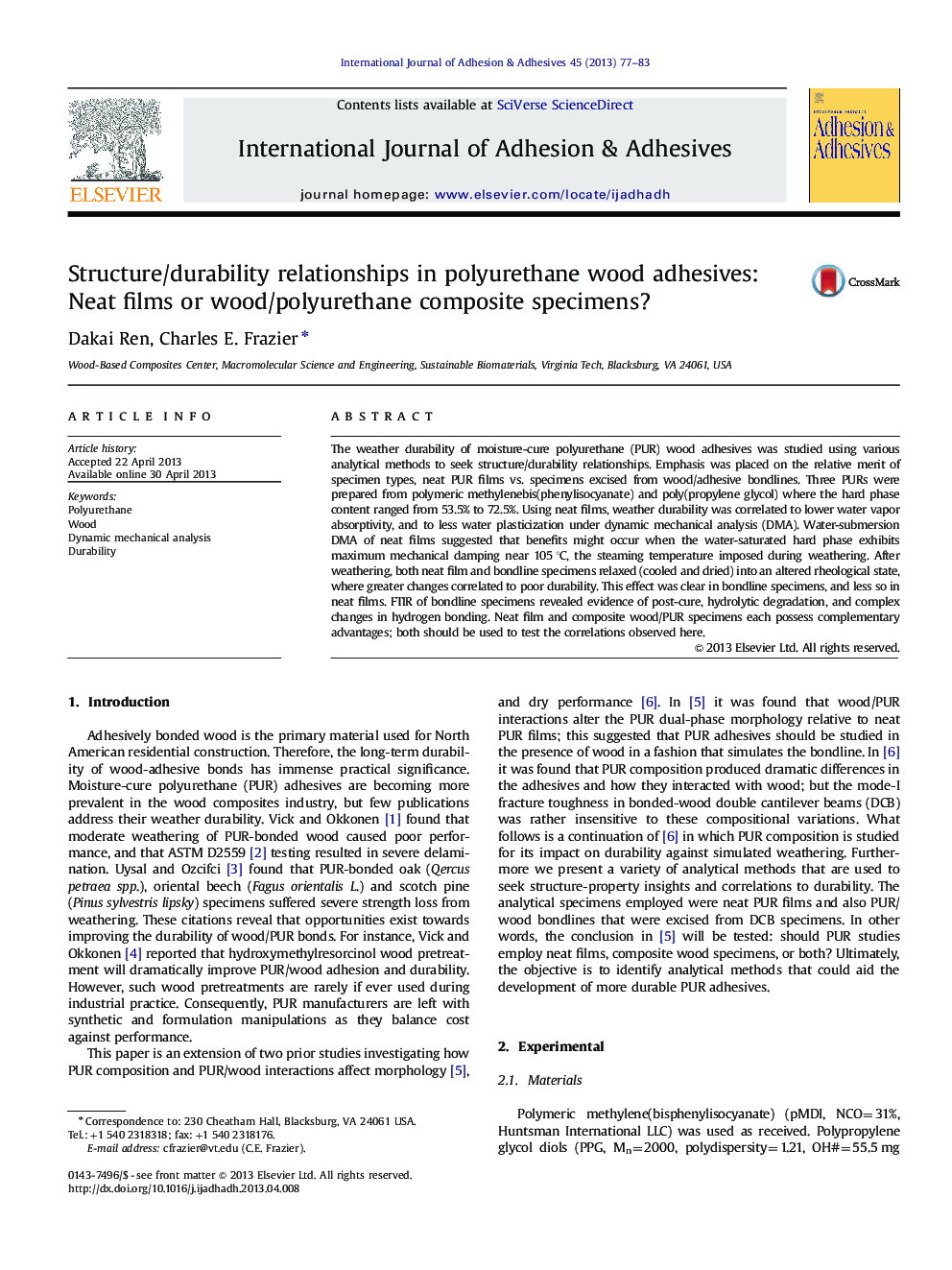| Article ID | Journal | Published Year | Pages | File Type |
|---|---|---|---|---|
| 776100 | International Journal of Adhesion and Adhesives | 2013 | 7 Pages |
The weather durability of moisture-cure polyurethane (PUR) wood adhesives was studied using various analytical methods to seek structure/durability relationships. Emphasis was placed on the relative merit of specimen types, neat PUR films vs. specimens excised from wood/adhesive bondlines. Three PURs were prepared from polymeric methylenebis(phenylisocyanate) and poly(propylene glycol) where the hard phase content ranged from 53.5% to 72.5%. Using neat films, weather durability was correlated to lower water vapor absorptivity, and to less water plasticization under dynamic mechanical analysis (DMA). Water-submersion DMA of neat films suggested that benefits might occur when the water-saturated hard phase exhibits maximum mechanical damping near 105 °C, the steaming temperature imposed during weathering. After weathering, both neat film and bondline specimens relaxed (cooled and dried) into an altered rheological state, where greater changes correlated to poor durability. This effect was clear in bondline specimens, and less so in neat films. FTIR of bondline specimens revealed evidence of post-cure, hydrolytic degradation, and complex changes in hydrogen bonding. Neat film and composite wood/PUR specimens each possess complementary advantages; both should be used to test the correlations observed here.
